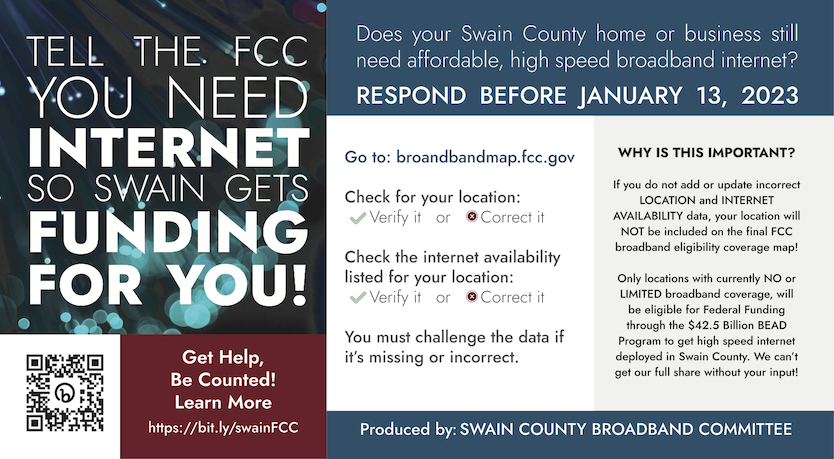New FCC Broadband Availability Map
Jeff Lee, LittleT Broadband
Broadband availability maps produced by the FCC are used to determine areas that are unserved by high-speed internet services so that these areas can be helped through grants and subsidies. Such maps and the data behind them are vital to the efforts of LittleT and others working to bring high-speed broadband solutions to rural western North Carolina. Sadly, in the past such maps have earned the reputation of being inaccurate and overstating the availability of broadband across the country, especially in rural areas. This complicates our job of seeking grant funding and subsidies, as these older maps show that more homes and businesses have access to high-speed services than is actually the case.
Knowing that these older maps have been problematic, back in 2020 congress passed legislation that mandated the creation of new FCC maps and a new broadband data collection system. The work to develop the new data collection system and maps has been ongoing for the past couple of years, and this past November the FCC released the first version of the new map which can be found here: https://broadbandmap.fcc.gov
The number one goal of the new map is to accurately show where high-speed broadband services are available and not available, and to provide this information down to the individual household or business. As this is a new map generated by data from the new broadband data collection system, this first version is really considered a draft or preliminary release. It will likely take several years before the new system and maps become truly accurate.
Why is this important?
This new map is very important because it will be used as a basis for all future broadband grant and subsidy funding decisions. The Infrastructure Investment and Jobs Act (IIJA), enacted in 2021 allocates $42.5B towards the development of broadband infrastructure. The IIJA legislation requires use of the new FCC broadband availability maps for allocation of this funding across the country.
This means that the new map will be used to determine which areas in North Carolina will be eligible for future broadband grant funding. Those locations that are unserved by existing high-speed broadband options and will not be served in the near future by other grants will be eligible for new funding.
How does this affect me?
The new map is interactive and provides the ability for individuals to look up their address and see what broadband options are reported as available at their location (home or business). If that information is not correct, you now have the ability to submit a correction. As more individual residents and businesses provide updates, the more accurate this map will become and the more areas in need will be able to get funding for broadband.
Our friends at the Swain County Broadband Committee have created a mailer and web page to let folks know about the map and to encourage and help them make updates. Rather than reinvent the wheel, please see their post card and website link below. All of this same information is applicable for Macon County as well.

https://bit.ly/swainFCC
I encourage all of you who are able to find your address on the new FCC map. Take a look at the information about your location and broadband services available. If you see something that is incorrect, follow the directions to submit an update.
If the map reports that a broadband service is available to your location, this is because the service provider has reported to the FCC that they either already serve your location or can provide service within 10 business days. If you would like to receive high-speed broadband service from this provider, go to their website and/or call them to request service.
If the provider responds that they are unable to provide service to your location, submit a correction to the FCC map and let us know via the "Contact Us" form on the website. We are already receiving reports of this for a number of the local providers. Keep in mind that the map is preliminary and that many providers are still reporting using some of the inaccurate and overstated methods of the past. As we are informed about inaccurate claims of service, we are compiling lists and will be working the Macon County Broadband Committee to challenge such claims with the FCC. The big change provided by the new map program is the ability for us all to report inaccurate claims of service and hold providers accountable.
Thanks in advance for your help.

